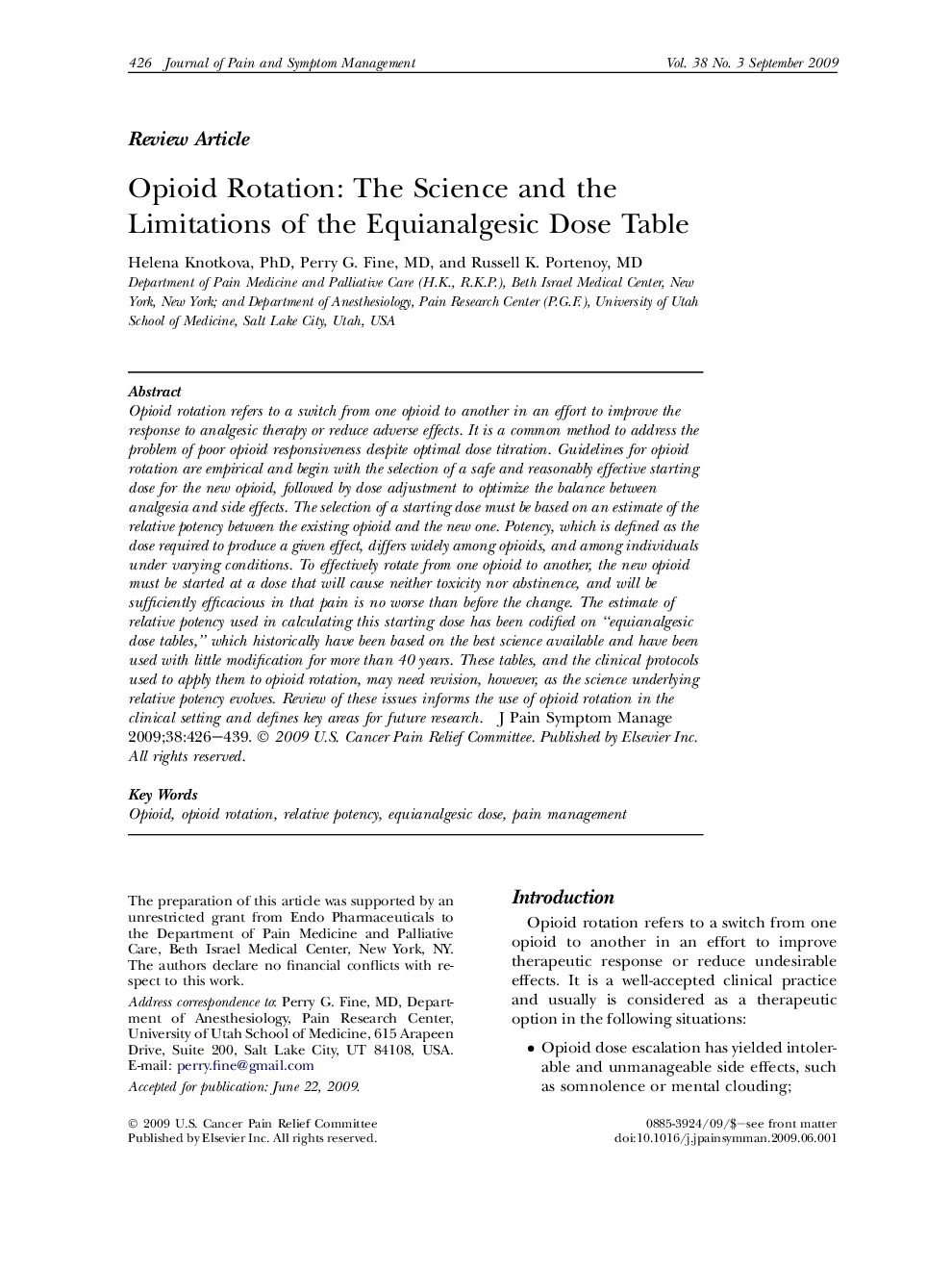| Article ID | Journal | Published Year | Pages | File Type |
|---|---|---|---|---|
| 5878242 | Journal of Pain and Symptom Management | 2009 | 14 Pages |
Abstract
Opioid rotation refers to a switch from one opioid to another in an effort to improve the response to analgesic therapy or reduce adverse effects. It is a common method to address the problem of poor opioid responsiveness despite optimal dose titration. Guidelines for opioid rotation are empirical and begin with the selection of a safe and reasonably effective starting dose for the new opioid, followed by dose adjustment to optimize the balance between analgesia and side effects. The selection of a starting dose must be based on an estimate of the relative potency between the existing opioid and the new one. Potency, which is defined as the dose required to produce a given effect, differs widely among opioids, and among individuals under varying conditions. To effectively rotate from one opioid to another, the new opioid must be started at a dose that will cause neither toxicity nor abstinence, and will be sufficiently efficacious in that pain is no worse than before the change. The estimate of relative potency used in calculating this starting dose has been codified on “equianalgesic dose tables,” which historically have been based on the best science available and have been used with little modification for more than 40 years. These tables, and the clinical protocols used to apply them to opioid rotation, may need revision, however, as the science underlying relative potency evolves. Review of these issues informs the use of opioid rotation in the clinical setting and defines key areas for future research.
Related Topics
Life Sciences
Neuroscience
Neurology
Authors
Helena PhD, Perry G. MD, Russell K. MD,
